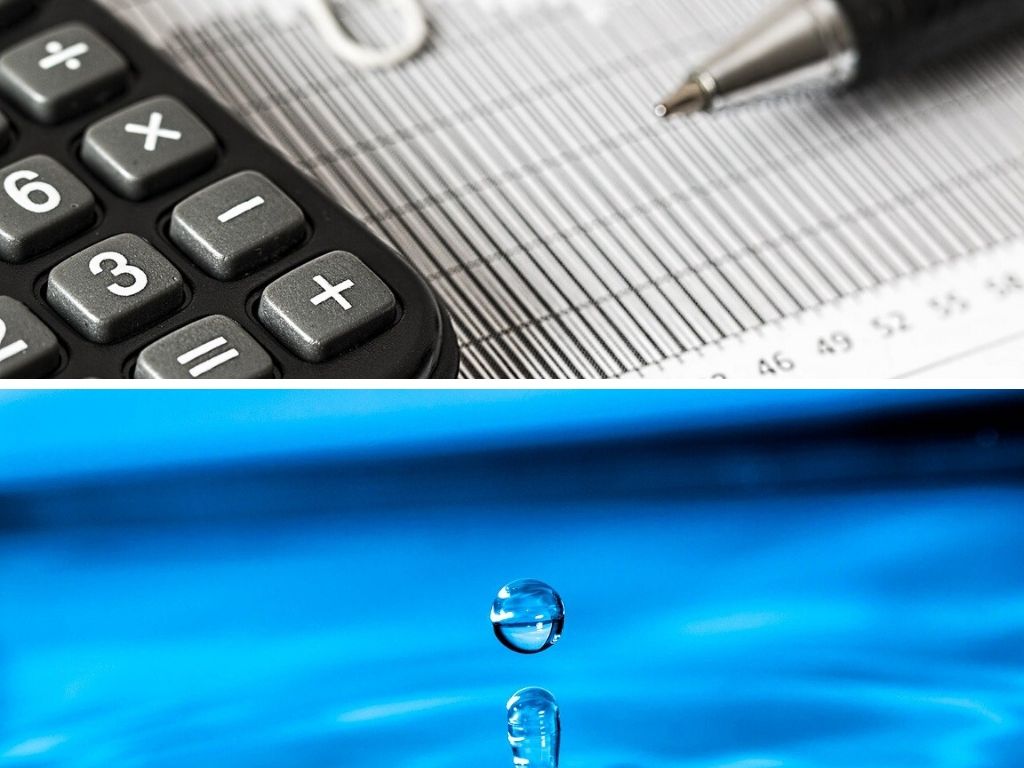Saving water at work is obviously highly dependent on a few factors.
In this guide, we look at potential individual, as well as company wide solutions to saving water at work.
(Note – this guide contains general information only. Workplaces and workers should do their own due diligence and make their own decisions as to what the best practices are for industries, companies and workers)
Summary – Saving Water At Work
Saving Water At Work Is Dependent On Certain Variables
Saving water at work is dependent on variables such as the type of work it is, how much control there is over implementing water saving strategies and actions in work processes and environments, and the tradeoffs to saving water.
How Individuals Might Save Water At Work
There are things individuals can do to save water at work, which are essentially similar things that individuals can do in general to save water in everyday life.
For the regular worker, considering the food they eat and waste might be the biggest way to have an impact.
How Companies & Whole Industries Might Save Water
On a wider spectrum, different companies and industries are going to have different capacities for saving water compared to others.
This is company specific, but, also depends on the different industries and work types across the different sectors of agriculture, industry and the municipal sectors
There are both direct and indirect ways water might be saved on a company and industry wide level (we’ve previously discussed direct and indirect, or visible and invisible water use in another guide)
Does Saving Water At Work Affect Other Things … Are There Tradeoffs?
Saving water at work will inevitably come with the additional questions of – does it affect profit? And, does it affect performance?
There might be tradeoffs that have to be considered.
Saving Water At Work – As An Individual
Food, & Food Waste
Food forms the biggest part of an individual’s daily water footprint.
Two important components might be the foods being eaten, and also reducing food waste.
Food has a water footprint to grow or produce, and some foods have higher water footprint than others.
Food substitution may be one way to save water – such as swapping a snack like a chocolate bar for a piece of fruit (like a banana), or soda for regular water.
Minimizing food waste (the food we pack and bring to work) is another way, by not throwing food out that we don’t want to eat at work.
Indirect Water Use
Includes the products and services we use.
One example of how to save water could be to make sure you are using energy efficient power devices (for lighting, laptops, etc) – as electricity production has a water footprint.
Another example is saving printing paper where possible and using electronic files instead.
Paper has a water footprint to produce, as does ink, and the printer’s operation itself.
Direct Water Use
In a regular office – it helps if toilet facilities like taps and toilets are fitted with water efficient fixtures (like ability to half flush, and timed taps).
Saving Water At Work – On A Company & Industry Wide Level
This is really something that is company and industry specific
So, each company and industry would need their own assessment done, and their own individual water saving solutions formulated.
There might be major potential for saving water in these industries in particular.
Just two examples of potentially saving water on an industry and company level might be:
– On An Industry Level In Agriculture
Using more water efficient irrigation systems on farms, and monitoring and fixing leaks in these systems to minimize water loss
– At A Company Level In A Car Washing Business
Wash vehicles with buckets of water instead of spraying and hose devices that use a lot more water (although, this may impact speed and performance in some ways)
– Other Examples
You can read more in these guides on potential ways to save water in the different sectors:
Using Water More Efficiently & Sustainably In Agriculture
Using Water More Efficiently & Sustainably In Industry
Using Water More Efficiently & Sustainably In The Household & Municipal Sector
Sources
1. https://www.bettermeetsreality.com/how-to-save-water-in-daily-life-simple-steps/
2. https://www.bettermeetsreality.com/foods-that-take-the-most-water-to-produce-make/
3. https://www.bettermeetsreality.com/how-we-might-use-water-more-efficiently-sustainably-domestically-on-the-household-level-potential-solutions-options/
4. https://www.bettermeetsreality.com/how-we-might-use-water-more-efficiently-sustainably-in-industrial-commercial-sectors-potential-solutions-options/
5. https://www.bettermeetsreality.com/how-we-might-use-water-more-efficiently-sustainably-in-agriculture-irrigation-potential-solutions-options/
6. https://www.bettermeetsreality.com/which-industries-use-the-most-water/
','' ); } ?>